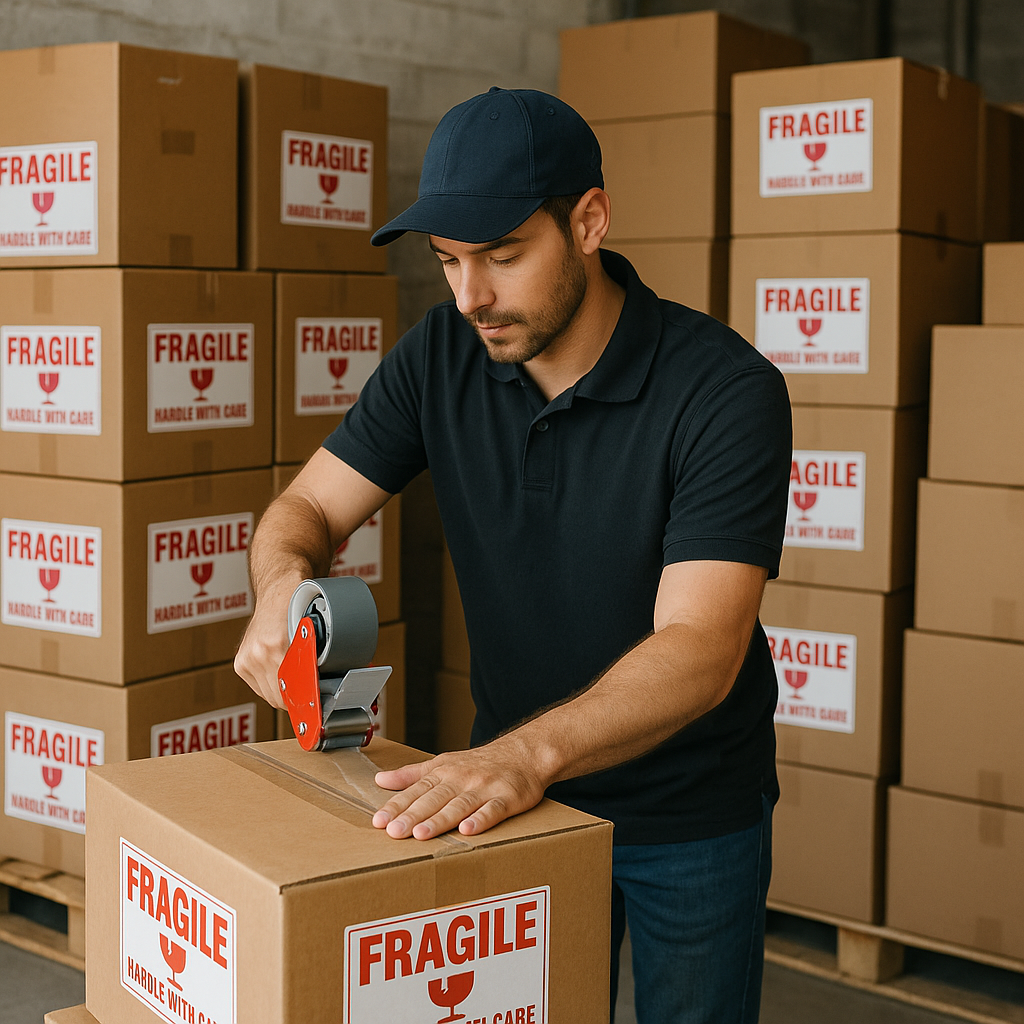How to Transport Fragile Items
Transporting Fragile Items Requires Expertise
Transporting fragile items via supply chain — whether you’re moving glassware, electronics, produce, or precision equipment — takes so much more than just labelling boxes with “handle with care.” It requires the right combination of packaging, palletizing, and storage strategies to ensure products arrive intact and undamaged.
From minimizing breakage to optimizing load stability, here’s what you need to know about safely moving delicate cargo.
Why Fragile Items Need Special Consideration
Unlike standard freight, fragile items are more sensitive to vibration, compression, and environmental conditions. Even minor mishandling can result in costly damage, product loss, and delayed deliveries.
A well-thought-out transportation plan accounts for these factors before items ever leave your facility, and palletizing plays a critical role in that process.
1. Choose the Right Pallet
The foundation of safe transport begins with the pallet. For fragile items, the right pallet will:
Provide stable support with minimal flex to prevent shifting.
Match the size of your load to avoid overhang, which increases the risk of damage.
Be clean and in good condition, free from splinters or protruding nails that could damage packaging.
Wood pallets remain the go-to choice for many industries due to their strength and versatility, but plastic pallets may be preferred in environments that require moisture resistance or easy cleaning.
2. Use Protective Packaging
Packaging is your first line of defense against impact. Options include:
Cushioning materials such as bubble wrap, foam inserts, or air pillows.
Shock-absorbing crates or cartons designed for the specific product.
Custom dividers to prevent items from knocking into each other.
The key is to fill empty spaces inside boxes or crates so items can’t move during transit.
3. Prioritize Load Stability
Even with great packaging, a poorly secured load can lead to disaster. For fragile shipments:
Stack boxes evenly with the heaviest items on the bottom.
Avoid overstacking to reduce pressure on lower layers.
Use corner protectors, slip sheets, or anti-slip mats for added stability.
Wrapping loads tightly with stretch film helps lock everything in place, preventing shifting on the pallet.
4. Minimize Handling
Every time a load is handled, the risk of damage increases. Whenever possible:
Use mechanical equipment like forklifts or pallet jacks instead of manual lifting.
Consolidate shipments to limit the number of transfers between trucks, docks, or storage areas.
Clearly label pallets as “FRAGILE” to encourage extra care.
5. Control Environmental Conditions
Some fragile goods — like fresh produce, pharmaceuticals, or electronics — are highly sensitive to temperature and humidity. Using climate-controlled storage and transportation ensures they remain stable throughout the supply chain.
6. Partner with an Experienced Pallet Provider
Working with a trusted pallet supplier can make all the difference in transporting fragile items. Olympic Forest Products, for example, helps customers match the right pallet type, size, and configuration to their load requirements. This ensures not only product protection but also compliance with industry standards.
Protecting Fragile Shipments with Proven Pallet Solutions
At Olympic Forest Products, we understand that transporting fragile items requires more than just delivery from point A to point B — that is why we ensure they arrive in perfect condition. Our team has decades of experience engineering pallet solutions that protect sensitive, high-value, and breakable goods across industries. From selecting the right pallet type to advising on load stability and compliance requirements, we bring precision and care to every shipment.
When your cargo can’t afford mistakes, trust Olympic Forest Products to deliver the right pallet strategy.
Contact us today to get expert guidance and proven solutions tailored to your fragile shipments.

